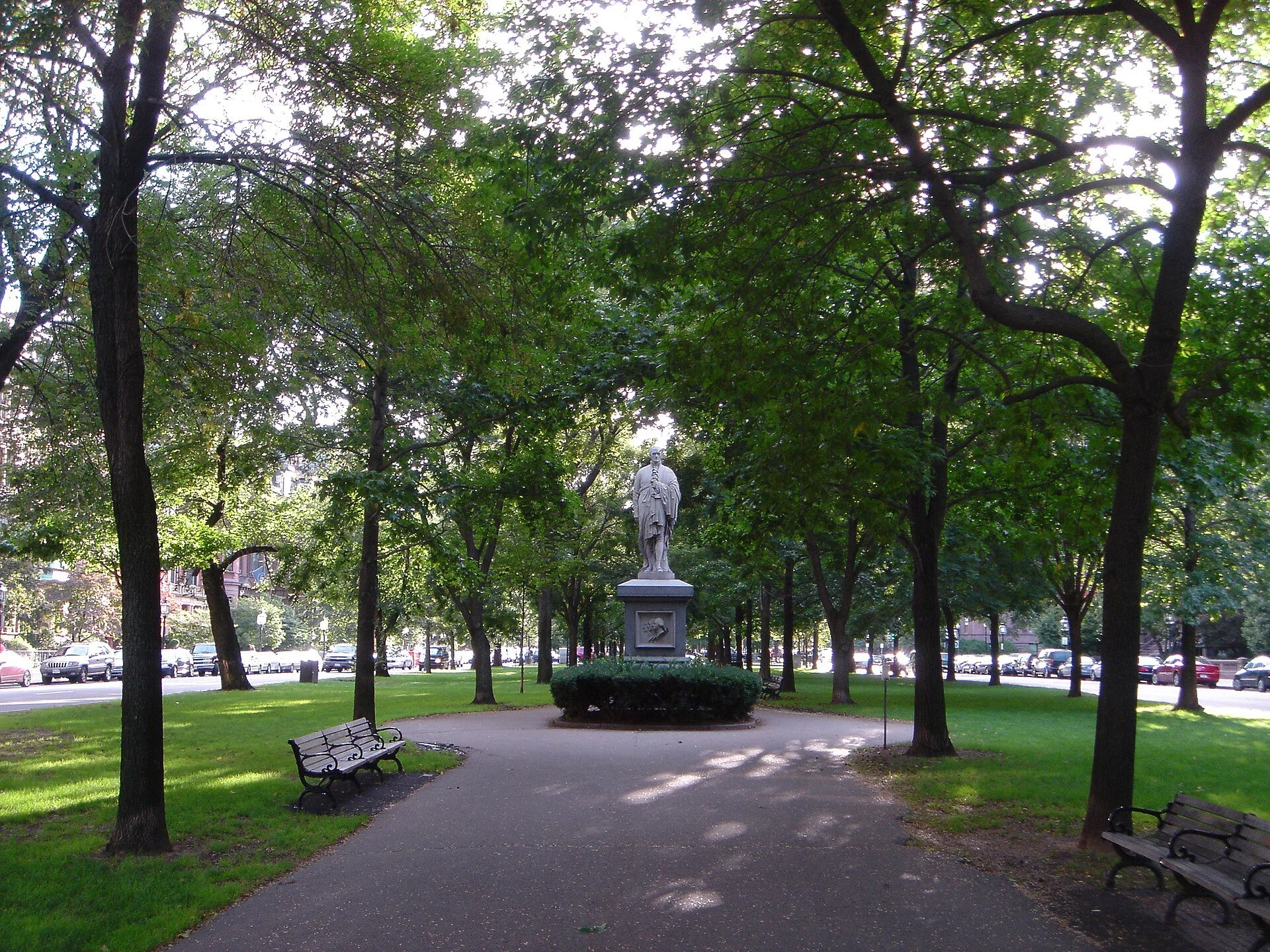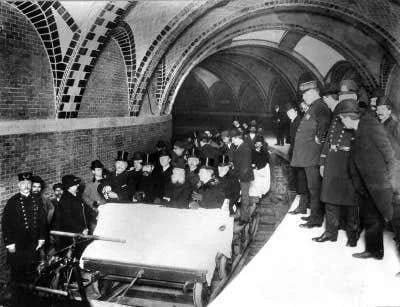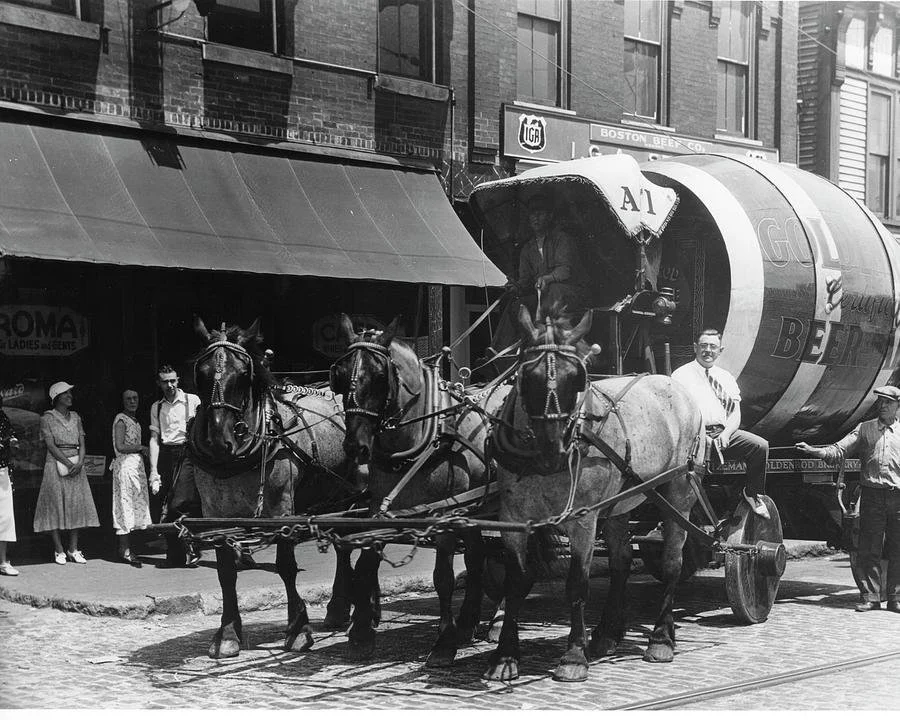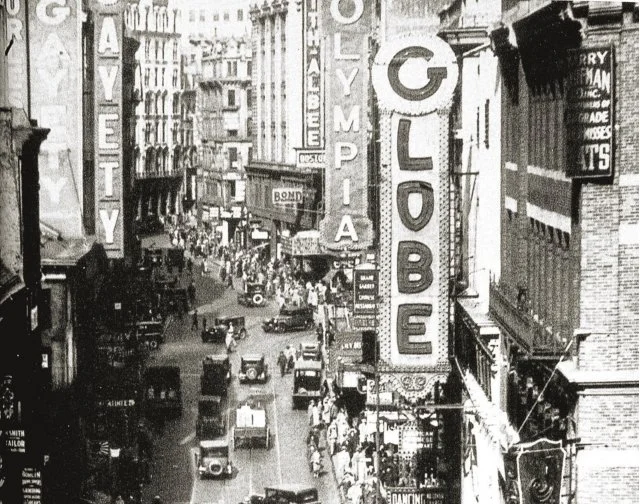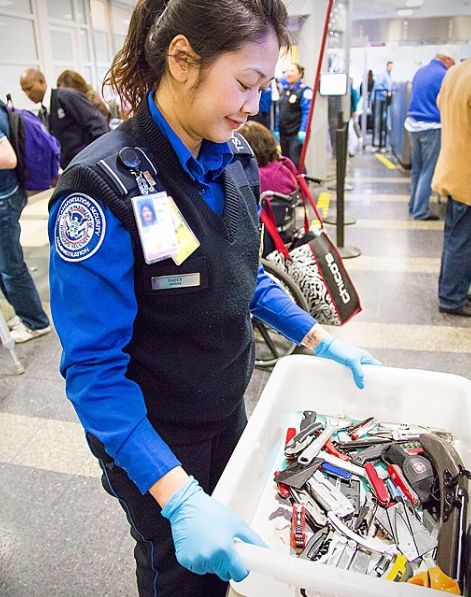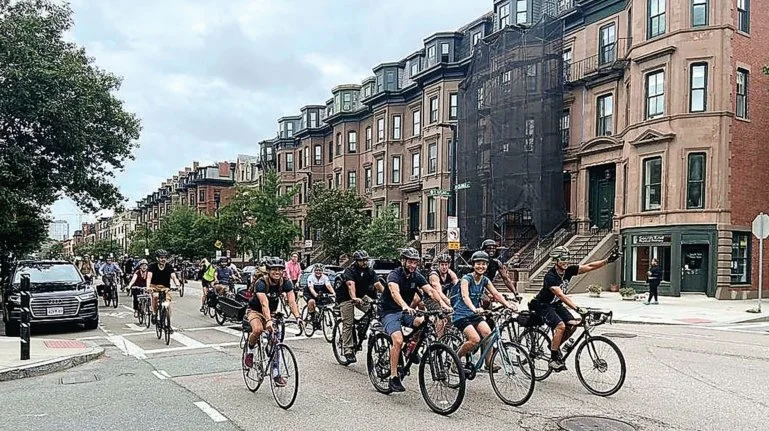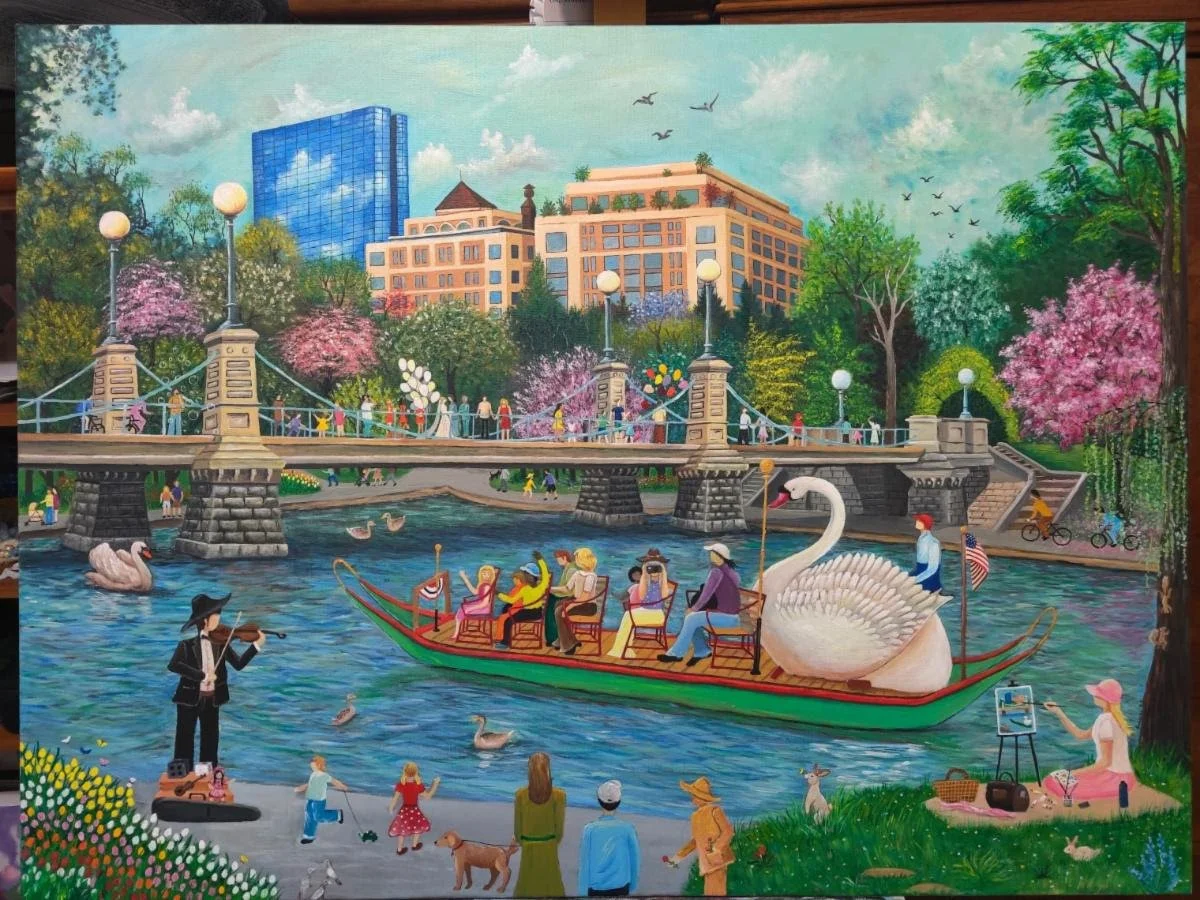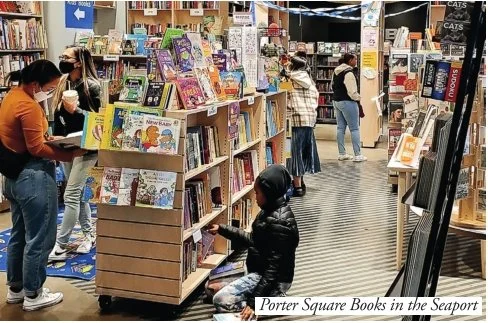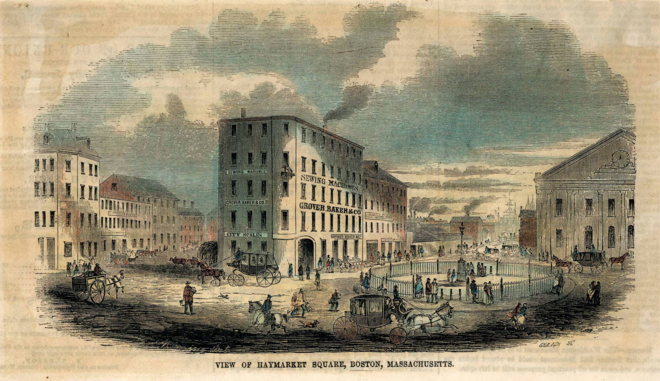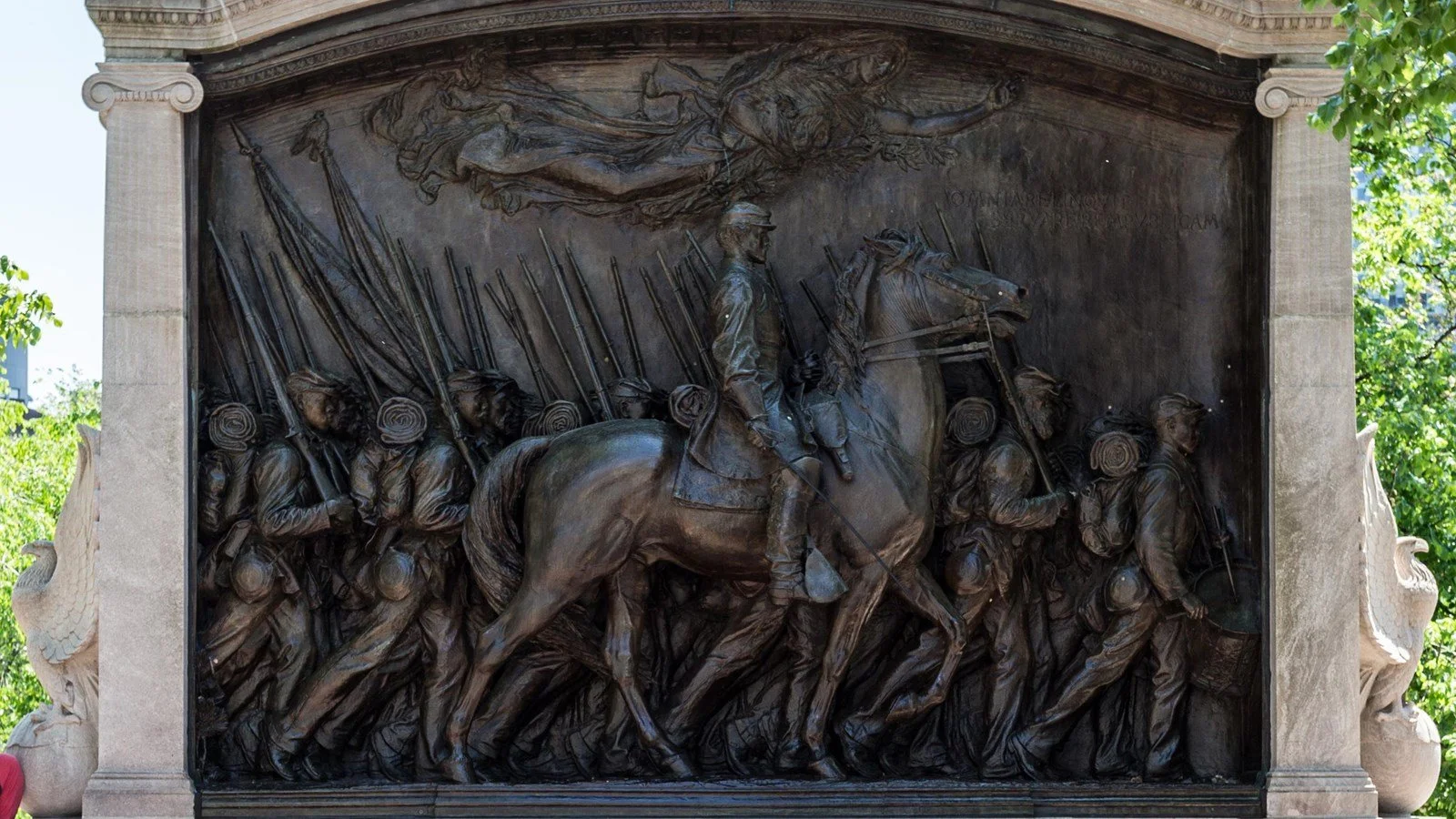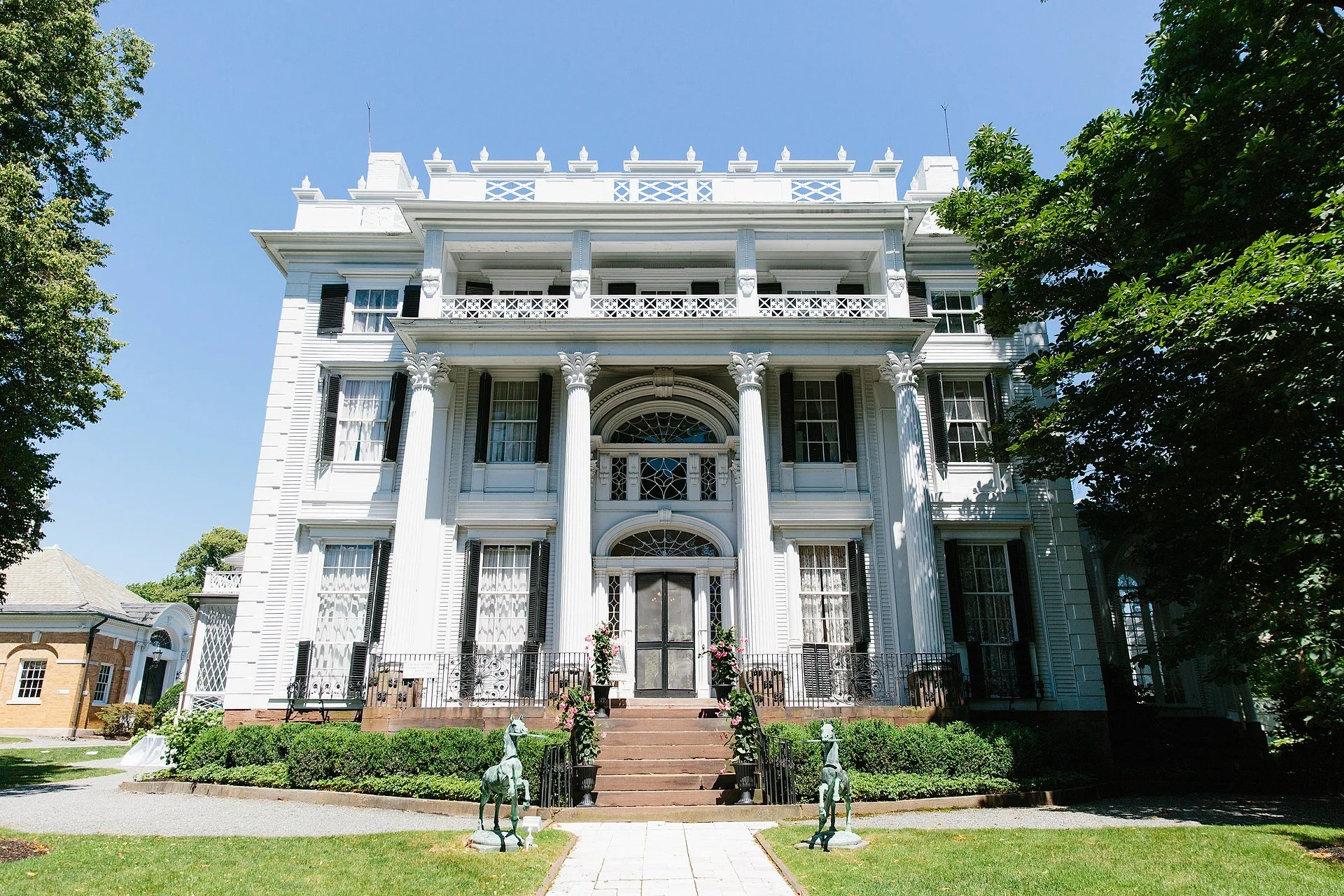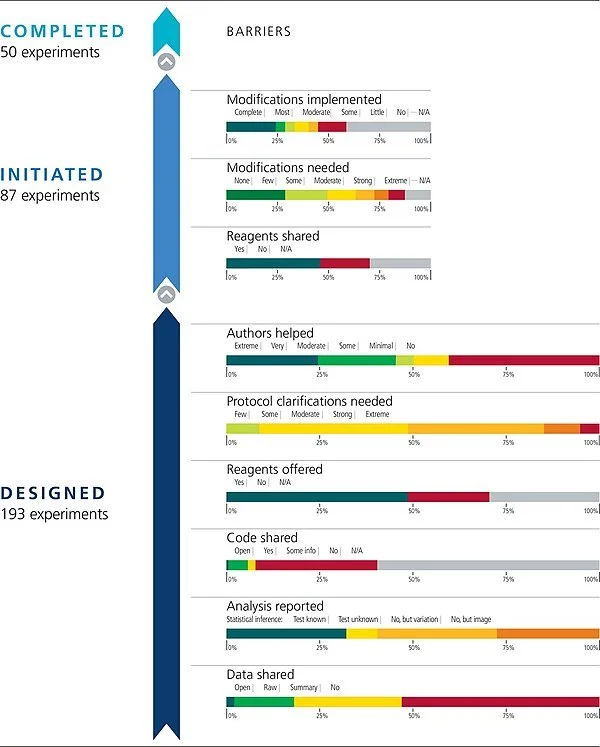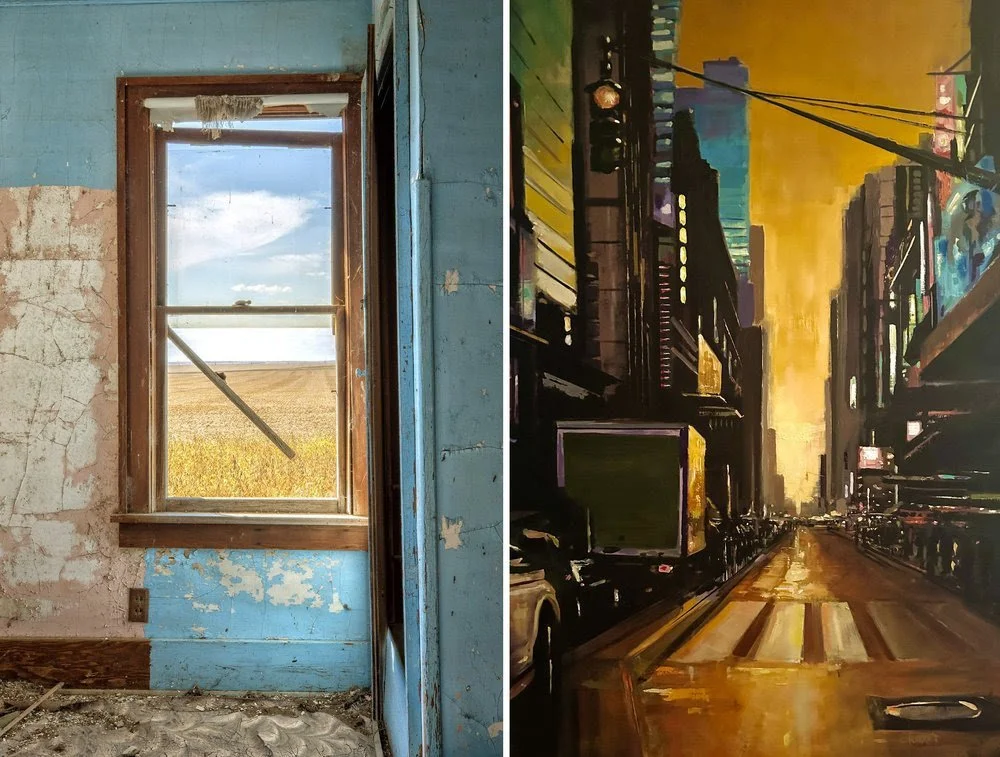Maurice Cunningham: Astroturf alert! — Rich right-wing Groups, Not ‘grassroots’ folks, are attacking public schools
Plaque on School Street, Boston, commemorating the site of the first Boston Latin School building. Boston Latin was founded in 1635, making it by far America’s first public school.
This article was produced by Our Schools.
Maurice Cunningham PhD, JD, retired in 2021 as an associate professor of political science at the College of Liberal Arts, University of Massachusetts, Boston, and is the author of Dark Money and the Politics of School Privatization.
BOSTON
“If your mother says she loves you, check it out” is a bromide drilled into every journalist. So it is baffling why, if an interest group includes the words “moms” or “parents,” it is just taken at its word, especially when a little digging can reveal that many of these groups are the creations of billionaires out to destroy public education.
As the author of Dark Money and the Politics of School Privatization, I have been following billionaire-backed education interest groups for more than a decade. Since big money lacks public credibility, it often masquerades as organizations claiming to represent the interests of “parents,” “moms,” “educators” and “families.” The concocted stories about how these groups were created are often repeated by an incurious press, which misses the opportunity to tell its readers a more interesting story: how billionaires and right-wing activists pour money into upbeat-sounding organizations to further their aim of privateering our public school system.
These astroturf operations have been proliferating resulting in serious negative impacts. Consider the havoc wreaked on some school boards by Moms for Liberty (M4L). M4L even got into presidential politics in 2024, boosting Donald Trump, at the behest of the donors, who co-founder Tina Descovich termed as M4L’s “investors.”
Consider a November 2024 Washington Post story on Linda McMahon’s nomination to be secretary of education. The article contrasted remarks from National Education Association (NEA) President Becky Pringle with an alternative view from Keri Rodrigues, founding president of the National Parents Union (NPU), which the reporter Laura Meckler called “a grassroots group,” thus giving the impression that NEA and NPU are similar organizations.
They are not. NEA is a well-established teachers’ union that credibly claims 3 million members and is governed by a democratic structure. NPU appeared on the scene in 2020, surfing in on millions of dollars from the foundations of American oligarchs, including the Walton family, Mark Zuckerberg and Charles Koch.
In 2024, Rodrigues, a fixture at education privateering groups, told the Boston Globe that NPU could get its message to “250,000 families to vote against” a ballot question sponsored by the teachers’ union and would “put that network to work.”
There is zero evidence that this extensive network exists or that it did anything on the ballot question. There is also no proof to validate Rodrigues’s claim that the organization has 1.7 million members nationally.
A 2021 Washington Post article introducing Moms for Liberty chronicled its claimed rapid rise without raising questions about how it grew so fast. The story simply provided the M4L narrative of its creation story, centered around former Florida school board members Descovich and Tiffany Justice. It omitted M4L’s third co-founder Bridget Ziegler, though it did quote her husband, Christian Ziegler, about the group’s political potency.
Bridget Ziegler served briefly on the M4L board and was replaced by GOP campaign consultant Marie Rogerson. Christian Ziegler was then the powerful vice-chair of the Florida Republican Party and a key Trump supporter. (In 2023, the Zieglers became famous for a threesome scandal. She quickly resigned from her executive position with the Leadership Institute, an established training institution for right-wing activists. Christian was removed from his perch as chair of the Florida Republican Party.)
The Post October 2021 story featured a photo of Descovich pulling aside, Superman style, a white jacket to reveal the group’s logo t-shirt while posing next to an American flag. The questions about the group’s ties to the Republican Party and suspicious financing were laughed off by the founders of M4L. The Post followed up a month later by printing an op-ed by Descovich and Justice.
NPU, M4L, and similar groups organize as nonprofit corporations under sections 501(c)(3) and 501(c)(4) of the Internal Revenue Service Code. As nonprofits, their Form 990 tax returns are made public but only in November, following the tax year. The information is skimpy but valuable. Journalists can access the Form 990s by requesting them directly from the nonprofits or from the ProPublica Nonprofit Explorer, which helps trace donors as well.
These groups leave clues that no reporter can miss:
1. Don’t buy the phony origin stories: These organizations all claim to be about moms joining together to improve education. But in no time, they have access to millions of dollars in donations and have the services of elite law firms, pollsters, media consultants, and often, ties to the Republican Party.
2. Follow the money: It isn’t easy in the first two years of a nonprofit’s existence, but there are signs: easy access to right-wing media, hiring expensive consultants, and big-budget conferences.
3. Watch how these groups work: The founding leadership usually consists of veteran right-wing operatives or communications professionals with years of experience in privateering organizations.
4. Get the big picture: Right from the beginning, M4L had obvious ties to Republican and right-wing organizations that often went unreported.
5. Keep following the money: When nonprofit tax forms finally become public, they’ll reveal how much was donated and can help identify the top contractors and how much they were paid.
Let us expand on these insights to show how these secretive operations can be exposed right from the beginning by using Form 990.
Don’t Buy the Phony Origin Stories
The typical “moms” or “parents” creation story goes something like this: outraged by some aspect of their children’s public school education, two or three “moms” band together to attract other like-minded parents to cure the deficiencies of the system, which are always the fault of the teachers’ unions. In truth, the “moms” are agents of far-right billionaires often tied—like M4L and Parents Defending Education (PDE)—to the secretive Council for National Policy, which seeks to privateer K-12 for profit, expand Christian education, and promote homeschooling.
According to the billionaire-funded online publication the 74, NPU “is the brainchild of two Latina mothers,” Keri Rodrigues and Alma Marquez, who “had disappointing experiences with education, both as parents and students, and with advocacy groups.”
To its credit, the 74 was candid about the funding of NPU: the foundations of billionaires, including Bill Gates, the Walton family, the late Eli Broad, and Michael and Susan Dell, and organizations like the City Fund, which gets its money from Reed Hastings, John Arnold, and Walton family members, inheritors of the Walmart fortune.
Nonetheless, the tenor of the story was of a grassroots moms’ start-up. Other news outlets ignored the 74’s detailing of billionaire funding. An online search through the New York Times website supplemented with a library search through Gale OneFile showed 13 NYT stories or columns that mention the National Parents Union since the group’s public launch on January 1, 2021. Only one column by Michelle Goldberg noted that “The National Parents Union is funded by the pro-privatization Walton Family Foundation.” The Waltons are, however, the only funders Goldberg mentioned.
The New Yorker came closest to the truth in a June 2021 piece: “The Walton foundation set up the National Parents Union in January 2020, with Rodrigues as the founding president.” A review of Form 990s for NPU and the Walton Family Foundation from 2020 through 2023 that I reviewed shows that NPU accepted more than $11 million in contributions. The Walton Family Foundation donated around $3 million of that amount.
The media are failing to cover the single most important fact the public needs to know about “parents” and “moms” groups: who is supplying them with millions of dollars in funding.
As for M4L, although a few media outlets wrote it had three founders, most followed the practice of CNN, which in December 2021 omitted Bridget Ziegler and described “the two women behind Moms for Liberty, a group of conservatives that came together in January,” downplaying the fact that at that time, the state GOP vice-chair’s wife was also one of the co-founders. By January 9, 2021, soon after its incorporation, M4L’s online store was offering magnets, T-shirts, and hats, and a “Madison Meetup” package of right-wing materials.
While mainstream media were valorizing M4L’s origin story, right-wing outlets produced a steady stream of propaganda about the organization. Later in January 2021, Descovich appeared on the Rush Limbaugh Show (guest-hosted by Todd Herman). Media Matters for America found that, by July 2022, M4L “representatives have been regulars on right-wing media, appearing on Fox News at least 16 times and Steve Bannon’s “War Room” at least 14 times.”
Another supposedly grassroots parents’ group that has an origin story grounded in deception is PDE. In lodging a civil rights complaint against the Columbus, Ohio, public schools in May 2021, PDE President Nicole Neily told the Columbus (Ohio) Dispatch, “We just all work from home… We’re all working moms.”
In fact, Neily is a well-compensated political operative in the Koch network. According to the Koch-connected Speech First’s Form 990 for 2019, which was available after November 2020 and thus before PDE was founded in 2021, Neily was paid $150,000 in 2019.
Follow the Money
Due to the barriers to tracing the funding of such groups, it can be hard to follow the money, especially in the first two years of operation. But in 2021, an article in the New Yorker described how the VELA Education Fund, a partnership of the Walton Family Foundation and the Charles Koch Institute, had given NPU $700,000 in 2020 to “help people with fewer resources,” including promoting homeschooling during COVID-19. This is despite the fact that NPU was not familiar with homeschooling.
Press outlets have also overlooked funding sources of M4L. In 2021, co-founder Descovich told CNN that M4L had raised more than $300,000 through t-shirt sales, small donors, and fundraising events. However, one such event was a gala featuring former Fox News personality Megyn Kelly in June 2021, six months into M4L’s first year. The top tickets went for $20,000. The Celebrity Speakers Bureau pegged Kelly’s speaking fee as between $50,000 and $100,000. The event raised at least $57,000.
In July 2021, Descovich appeared at a Heritage Foundation virtual town hall on “Preserving American History in Schools.” By October 29, 2021, M4L was referring members to the Leadership Institute for training and sending members to the Heritage Foundation for events and other resources. Both these organizations have been part of the right-wing political firmament since the 1970s. A bit of digging showed that M4L was deeply embedded in far-right politics. But most press accounts ignored that evidence and the public remained largely in the dark.
In April 2021, PDE headed by Neily, brought on Elizabeth Schultz as a “senior fellow,” who had worked under Trump’s Education Secretary Betsy DeVos during his first term and was a vocal anti-LGBTQ activist.
Watch How These Groups Work
These groups can be intertwined. PDE, M4L, and another faux-grassroots group, No Left Turn in Education (NLTE), all came on the scene around the same time, with NLTE being founded in 2020. PDE’s website includes a map called “IndoctriNation” with lists of affiliates across the nation. The April 15, 2021, listings (the website appears to have gone live only in March 2021) showed that most of its allies were chapters of M4L and NLTE with few actual members, according to my research in 2021.
Media reports seemed content to accept the “moms working from home” creation story despite the obvious early support from well-resourced groups.
NPU held its organizing meeting, which it claims drew representatives from all 50 states, in New Orleans in January 2020. To promote the event, NPU employed Mercury Public Affairs, an international public relations firm. To draw press attention, NPU also commissioned polling from Echelon Insights, a Republican pollster that has also worked for the Walton family.
In the same year of its founding, in 2021, PDE published detailed plans, such as “How to Create ‘Woke At’ Pages,” that instruct parents on how to use secrecy to attack “woke activists” in the education system. PDE also began initiating lawsuits against local school boards, represented by the Republican law firm of Consovoy McCarthy.
William Consovoy, who died in 2023, was in the Federalist Society, the nationwide network of conservative lawyers that helped form Trump’s picks for the U.S. Supreme Court. Consovoy had been a law clerk to Justice Clarence Thomas and represented Donald Trump during a congressional investigation. The firm also represented Trump in 2020 as he tried to intervene before the Supreme Court to stop the vote count in Pennsylvania. When PDE’s 2021 Form 990 became available, it showed PDE paid Consovoy McCarthy $800,000 in legal fees.
Get the Big Picture
The clues kept coming, only to be ignored by the press.
In 2022, M4L held its first national summit in Tampa, Florida. In its reporting of the event, NBC portrayed the group as a political powerhouse, reporting that attendees “browsed booths set up by conservative groups, including Turning Point USA, the Leadership Institute and Heritage Action, and the evangelical Liberty University” without describing these organizations for what they are—the critical infrastructure of Christian nationalism.
Media reports on the event generally ignored who the sponsors of the summit were or the amounts of their donations. The Leadership Institute donated $50,000. The Heritage Foundation and Heritage Action for America provided $10,000 each. And PDE chipped in $10,000. Meanwhile, Descovich was still peddling the story that M4L was getting by on t-shirt sales, even though an aide to Leadership Institute’s Morton Blackwell bragged about how the institute had provided the relevant training to help the group “become a national force.”
When there were questions raised about how M4L could fund such a lavish event with T-shirt sales, M4L denied any connections to deep-pocketed right-wing groups, and most news reporters presented a simple “he said, she said” account and moved on. Reporters generally missed the bigger story that the institutional right was creating and passing off phony “moms” and “parents” operations.
Keep Following the Money
Once Form 990s were filed, the deception became obvious, but that didn’t mean it got covered by big media outlets.
The 2022 Form 990 for NPU showed that Keri Rodrigues was paid $410,000 from NPU and a sister organization. She paid her husband, the chief operating officer of both organizations, $278,529. Yet, in August 2024, CBS Morning News presented Rodrigues as a typical parent worried about back-to-school shopping.
PDE’s Form 990 for 2021 was even more revealing, as exposed by True North Research’s Lisa Graves and Alyssa Bowen for Truthout in 2023. Graves and Bowen showed that PDE is deeply tied with far-right Supreme Court fixer Leonard Leo, even paying $106,938 to his for-profit consulting firm.
PDE, a brand-new operation, raised $3,178,272 in its first year in 2021. It paid Neily, who is also on the board, a total compensation of $195,688 for her 40-hour work week.
According to Speech First’s Form 990 for 2021, Neily put in an additional 20-hour week for Speech First, earning another $86,117 and a total of $281,805 from both Koch- and Leo-funded operations combined. In 2023, PDE pushed Neily’s base salary and other compensation up to $341,400. This is quite an income for a stay-at-home working mom.
The trail from NPU leads back to the Walton family and billionaire allies who have been working to undermine teachers’ unions and siphon public money to charter schools for years.
Scratch the surface of groups like M4L and PDE, and you find the Heritage Foundation, the Leadership Institute, and Leonard Leo—the elite of far-right politics who work to replace public schools with for-profit schools, religious schools, and homeschooling. These details make for a very important story that most journalists have overlooked.
Stop Being Fooled
Reporters should not be fooled by the techniques used by these fake “mom” and “parent” groups on behalf of their extremist overseers. As Naomi Oreskes and Erik M. Conway show in Merchants of Doubt: How a Handful of Scientists Obscured the Truth on Issues from Tobacco Smoke to Global Warming, these techniques have been used by “scientific” nonprofits created by the same conservative groups, including the Heritage Foundation, to contest climate change.
Many have tracked the origin of these techniques back to the tobacco industry’s fight to protect their profits from the growing body of research linking their products to cancer and other health problems.
In 1994, tobacco giant RJ Reynolds created the industry front group Get Government Off Our Back to advance a “smokers’ rights” campaign to fight against the tsunami of scientific evidence exposing the health risks of tobacco. Reynolds kept its backing a secret while promoting it as a movement of “grassroots” smokers.
Meanwhile, in his farewell address, former President Joseph R. Biden warned about how the wealthy are a big threat to democracy:
“Today, an oligarchy is taking shape in America of extreme wealth, power, and influence that literally threatens our entire democracy, our basic rights and freedoms, and a fair shot for everyone to get ahead.”
For years, the same oligarchy that threatens basic rights has been threatening our freedom to have access to a high-quality system of public education. There is no reason they should be aided by credulous reporters from trusted news sources. If we can question our moms on whether they really love us, we can question the authenticity of these moms and parent groups.
Inspired by Boston landmarks
"IYKYK" (wood, plastics), by Christopher Abrams, in his show "IYKYK," at Boston Sculptors Gallery, Oct. 3-Nov. 3.
The famous sign at Kenmore Square, in Boston.
The gallery says:
“The show is a series of small-scale sculpture based on iconic landmarks and forgotten histories in the Boston area. While Abrams continues to concentrate on small-scale representational concerns, the artist revisits and redirects his focus, abandoning the intense fealty to detail that characterizes his earlier miniature efforts, in favor of finding essential, meaningful symbols and imagery.
“Taking inspiration from his hometown, Abrams draws on the events and visual vocabulary that create and distinguish the unique identity of Greater Boston. Selecting and amplifying elements of the local, shared visual fabric, Abrams weighs how seemingly minor details can allude to a rich, shared narrative.’’
All is perfect in Boston
On the Commonwealth Avenue Mall, in Boston's Back Bay.
The people’s lives in Boston
Are flowers blown in glass;
On Commonwealth, on Beacon,
They bow and speak and pass.
No man grows old in Boston,
No lady ever dies;
No youth is ever wicked,
No infant ever cries.
From E.B. White’s poem “Boston Is Like No Other Place in the World Only More So,’’ published in the Sept. 23, 1949 New Yorker. Here’s the whole poem.
Primacy in plumbing
Edited from From The Boston Guardian
In 1829, the Tremont Hotel opened at the corner of Tremont and Beacon streets in downtown Boston. It had 170 rooms that each rented for $2 a day and included four meals. In 1869 the Tremont became the first hotel in the U.S. to install indoor plumbing. Notable guests included Davy Crockett and Charles Dickens. In 1895, the hotel was razed and replaced with an office building.
Taking it underground, away from the horse manure
Photo of the opening, on Sept. 1, 1897, of the first subway in the United States, a segment of the Green Line tunnel between Park Street and Boylston stations.
Horse-drawn beer wagon in Boston in early 20th Century.
Nervous gay times on lower Washington Street
Washington Street in the 1920’s.
Excerpted from From The Boston Guardian
(New England Diary’s editor, Robert Whitcomb, is chairman of The Boston Guardian.)
“Before the Combat Zone, lower Washington Street was Gay Times Square, a mecca of bright lights, entertainment and a tolerance for life beyond the societal norms of heterosexuality….
“Prior to being plagued with strip joints with names like The Naked i Cabaret and the Pussycat Lounge, the neighborhood was home to Playland, the Petty Lounge and Touraine Cafe. The gathering places drew an LGBTQ crowd, while the local theaters, such as the Stuart Theater and the Pilgrim, created a show-business atmosphere that New York’s Times Square is known for.
“Many of the bar owners in the area often used bribery or connections with organized crime to keep police from raiding their establishments, according to research from The History Project, a Boston-based LGBTQ history organization.
“In the 1950s and 1960s, threats of persecution and prosecution kept the LGBTQ community underground, making many of the bars on Washington Street appealing….”
Jay L. Zagorsky: What about all that small change we leave at airports?
TSA officer at airport with a tray of prohibited items.
BOSTON
Should the U.S. get rid of pennies, nickels and dimes? The debate has gone on for years. Many people argue for keeping coins on economic-fairness grounds. Others call for eliminating them because the government loses money minting low-value coins.
One way to resolve the debate is to check whether people are still using small-value coins. And there’s an unlikely source of information showing how much people are using pocket change: the Transportation Security Administration, or TSA. Yes, the same people who screen passengers at airport checkpoints can answer whether people are still using coins – and whether that usage is trending up or down over the years.
Each year, the TSA provides a detailed report to Congress showing how much money is left behind at checkpoints. A decreasing amount of change would suggest fewer people have coins in their pockets, while a steady or increasing amount indicates people are still carrying coins.
The latest TSA figure shows that during 2023, air travelers left almost US$1 million in small change at checkpoints. This is roughly double the amount left behind in 2012.
At first glance, this suggests more people are carrying around and using coins. But as a university researcher who studies both travel and money usage – as well as a keen observer of habits while lining up at airport checkpoints – I know the story is more complicated than these numbers suggest.
What gets left behind?
More than 2 million people fly each day in the U.S., passing through hundreds of airport checkpoints manned by the TSA. Each flyer going through a checkpoint is asked to place items from their pockets such as wallets, phones, keys and coins in either a bin or their carry-on bag. Not everyone remembers to pick up all their items on the other side of the scanner. About 90,000 to 100,000 items are left behind each month, the TSA estimates.
For expensive or identifiable items such as cellphones, wallets and laptops, the TSA has a lost-and-found department. For coins and the occasional paper bills that end up in the scanner bins, TSA has a different procedure. It collects all that money, catalogs the amount and periodically deposits it into a special account that the TSA uses to improve security operations.
That money adds up, with travelers leaving behind almost $10 million in change over the past 12 years.
The amount of money left varies by airport. JFK International Airport in New York City is consistently in one of the top slots for most money lost, with travelers leaving almost $60,000 behind in 2022. Harry Reid International Airport, which serves Las Vegas, also sees a large amount of money left behind. Love Field in Dallas, headquarters of Southwest Airlines, is often near the bottom of the list, with only about $100 lost in 2022.
People lose money while going through security for a few reasons. First, some cut it close getting to the airport, and in their rush to avoid missing their plane, they don’t pick up everything after screening. Second, sometimes TSA lines are exceptionally long, leaving people to again scramble to make up time. And finally, TSA checkpoints are often confusing and noisy places, especially for new or infrequent travelers. Making it more confusing is that some airports have bins featuring advertisements, which distract travelers who only quickly glance to check for all their items.
How much is lost?
TSA keeps careful track of how much is lost because the agency is allowed to keep any unclaimed money left behind at checkpoints. TSA records show people left behind half a million dollars in 2012. This rose to almost a million in 2018. The drop in travel due to the COVID-19 pandemic reduced the figure back to half a million in 2020. In 2023, people left $956,000.
These raw figures need two adjustments to accurately track trends in coins lost. First, the numbers need to be adjusted for inflation. From 2012 to 2023, the consumer price index rose by 33%. This means a dollar of change in 2012 purchased one-third more than it did 12 years later.
Second, the number of people flying and passing through TSA screening has changed dramatically over time. In 2012, about 638 million people went through the checkpoints. By 2023, that had risen to 859 million people, which is about 1,000 people every 30 seconds across the entire U.S. when airports and checkpoints are open.
Adjusting for both inflation and the number of people screened shows no change in the amount of money lost. My calculations show back in 2012 about $1.10 in coins was lost for every 1,000 people screened. In 2023, about one penny more, or $1.11, was lost per 1,000.
The peak year for money being lost was 2020, when $1.80 per 1,000 people was left behind. This was likely due to people not wanting to touch objects out of misplaced fear they could contact COVID-19. During the pandemic, people in general carried less money.
The world is increasingly using electronic payments. The data from TSA checkpoints, however, clearly shows people are carrying coins at roughly the same rate as back in 2012. This suggests Americans are still using physical money, at least for making small payments – and that the drive to get rid of pennies, nickels and dimes should hold off a while longer.
Jay L. Zagorsky is associate professor of markets, public policy and law at Boston University.
He does not work for, consult, own shares in or receive funding from any company or organization that would benefit from this article, and has disclosed no relevant affiliations beyond his academic appointment.
What happened to downtown Boston 'height bonus' model?
“The Downtown’s deferred zoning update has abruptly lost one of its core propositions, replacing a pay-for-height proposal with new ‘skyline districts’ and leaving compensation for that height to the yet undecided Article 80 process.
“The Boston Planning and Development Agency (BPDA) outlined the changes in an April 9 public meeting on PLAN: Downtown, a sweeping set of reforms that drastically changes downtown zoning to allow more businesses and, in some places, increases the maximum building height by hundreds of feet.
“PLAN: Downtown was supposed to be resolved back in November but proved controversial enough to delay full adoption and split into three parts to be debated separately this year.
“Now PLAN: Downtown seems to have lost its central ‘height bonus’ model that allowed developers to build by right up to state shadow and aviation limits in exchange for proportional donations to a community fund.’’
To read the whole article, please hit this link.
'Reflection of the presence of time'
“Untitled” (various media on panel), by Cambridge, Mass.-based George Shaw, in his current show, “Architecture of Time,’’ at Galatea Fine Art, Boston.
Mr. Shaw says:
“Architecture has always fascinated me because of its presence and how it modifies our experience of place and time. The pieces in this show are a reflection of this and are intended to be a meditation on objects as a reflection of the presence of time. Time is essential to our sense of being, yet it is intangible and only manifests itself in our memories and objects.’’
Cullen Paradis: Are BlueBikes in Boston skirting state safety law?
Biking in the Back Bay
(New England Diary editor Robert Whitcomb is chairman of The Boston Guardian)
“BlueBikes in Boston may be skirting state regulations meant to ensure bike safety, fulfilling a helmet availability requirement by selling them on their online storefront.
“State law requires all bike rental businesses to make helmets available to customers as well. Yet if you pay for a ride at a BlueBike rack, you won’t see any helmet being offered.
“That’s because the company fulfills its legal obligation by selling branded helmets on its website, ensuring all customers have the option of safety so long as they’re willing to walk the bike home, wait for the helmet to be shipped to them, and only then ride to their destination.
“That’s if customers can even find the storefront. The BlueBikes Website does not include a link in the top banner, tucking the sole mention of a store all the way at the bottom of the page next to the privacy statement and career board….’’
To read the whole article, please hit this link.
Cullen Paradis is a Boston Guardian reporter
BlueBikes are the Ruggles MBTA station in 2019.
Happy days
“Boston Public Garden Serenade,’’ by Sudakshina Bhattacharya, in the show “Clean Slate: A Juried Exhibition Inspired by the Change of Season,’’ at StoveFactory Gallery, in Boston’s Charlestown section.
— Photo of painting courtesy of the artist
The gallery says the show “embraces spring through 68 works made by 48 artists who create across all mediums. ‘‘
Stuck on the seas
“The Flying Dutchman,’’ by James Cole, in his show at Galatea Fine Art, Boston, through March 30.
‘Despise the glare of wealth’
Surely you never will tamely suffer this country to be a den of thieves. Remember, my friends, from whom you sprang. Let not a meanness of spirit, unknown to those whom you boast of as your fathers, excite a thought to the dishonor of your mothers I conjure you, by all that is dear, by all that is honorable, by all that is sacred, not only that ye pray, but that ye act; that, if necessary, ye fight, and even die, for the prosperity of our Jerusalem. Break in sunder, with noble disdain, the bonds with which the Philistines have bound you. Suffer not yourselves to be betrayed, by the soft arts of luxury and effeminacy, into the pit digged for your destruction. Despise the glare of wealth. That people who pay greater respect to a wealthy villain than to an honest, upright man in poverty, almost deserve to be enslaved; they plainly show that wealth, however it may be acquired, is, in their esteem, to be preferred to virtue.’’
—- John Hancock ( 1737 -1793), an American Founding Father, rich Boston-based merchant, statesman and prominent Patriot of the American Revolution. He served as president of the Second Continental Congress and was the first and third governor of the Commonwealth of Massachusetts. This quote is from his “Boston Massacre Oration,’’ on March 5, 1774.
Indie bookstores in Boston doing well
(New England Diary’s editor, Robert Whitcomb, is chairman of The Boston Guardian)
Boston’s independent bookstore scene is at its healthiest in decades, and it could continue communities, while three existing stores have expanded their operations, according to The Boston Globe. Boston’s downtown neighborhoods have seen the lion’s share of this growth, growing in 2024.
Since 2020, at least eight claiming four of the openings and bookstores have set up shop one of the expansions.
Paired with bookstores’ slim margins, Boston’s expensive commercial real estate has largely prevented bookstores from opening downtown over the past few decades, said Beth Ineson, executive director of the New England Independent Booksellers Association, a trade association. But that changed after a dip in real estate prices following the pandemic.
“My association has seen an unprecedented amount of growth across the entire region during that time because there was more commercial real estate easily available,” she said. Even after its recent renaissance, downtown’s bookstore scene could still have some room to grow. Ineson said that because of Boston’s highly educated population, the city still has fewer bookstores than one would expect for a city of its size.
“Our demographics in Boston proper really should support far more independent bookstores than have previously been downtown,” she said. “Given the population here, there’s certainly always room for more stores, and I’m delighted that we see stores opening in different neighborhoods in the city.”
Of Boston’s downtown neighborhoods, the Seaport has seen some of the most impressive growth in its bookstore scene. Though it didn’t have a bookstore before the pandemic, the fast-growing and once- industrial neighborhood now has two just blocks apart.
Boston women’s shelter gets boost from foundation created by former Red Sox owners
Edited from a New England Council report
“The Pine Street Inn has used some of the $15 million it has received from the Yawkey Foundation to help expand and otherwise improve the women’s shelter, in Boston’s South End. The Yawkey family were long-time owners of the Boston Red Sox.
“The $15 million award represents the largest single donation in the Pine Street Inn’s 55-year history. After getting the donation, Pine Street is getting going on its plan to add 400 to 500 new units of permanent housing over the next five years, which will mark about a 40 percent expansion in its capacity. This increase will arrive at a crucial juncture, as Boston faces the dual challenges of an influx of migrants and escalating housing costs.
“‘Even this isn’t enough, but it’s a beginning,’ said Pine Street Inn President Lyndia Downie. Pine Street and Yawkey Foundation officials recently gathered at the women’s shelter to celebrate the late Jean Yawkey’s 115th birthday through the naming of the ‘Yawkey House.’ More than 1,300 women are supported each year through Pine Street’s outreach. It hopes to help more.’’
GOP mulls ‘Slayveree’; See haunting bas relief in Boston
From the National Park Service:
The Robert Gould Shaw and Massachusetts 54th Regiment Memorial, installed in 1884, a haunting bronze bas relief on the Boston Common, and created by famed sculptor Augustus Saint-Gaudens, commemorates the first Black regiment from the North in the Civil War. Although African Americans served in both the Revolutionary War and the War of 1812, Northern racist sentiments kept African Americans from taking up arms for the United States in the early part of the Civil War. However, a clause in Abraham Lincoln's 1863 Emancipation Proclamation allowed for the raising of Black regiments. Gov. John Andrew soon created the Massachusetts 54th Volunteer Infantry. He chose Robert Gould Shaw, the son of wealthy abolitionists, to serve as its colonel. Notable abolitionists including Frederick Douglass and local leaders such as Lewis Hayden recruited men for the 54th Regiment. African Americans enlisted from every region of the north, and from as far away as Canada and the Caribbean.
Through their heroic, yet tragic, assault on Fort Wagner, S.C., on on July 18, 1863, in which Shaw and many of his men died, the 54th helped erode Northern public opposition to the use of Black soldiers and inspired the enlistment of more than 180,000 Black soldiers into the Union’s forces.
The front of Linden Place, the Bristol, R.I., mansion built in 1810 for infamous slave trader (and other “cargoes”), privateer and ship owner Gen. George DeWolf and designed by architect Russell Warren. The mansion now operates as a historic house museum.
— Photo by Bbucco/ Tiffany Axtmann Photography
A physician’s memoir of a son’s and his own early-onset cancer
Sidney Farber, M.D. (1903-1973), of Children’s Hospital, Boston, with a patient. Dr. Farber, a pediatric pathologist, is regarded as the father of modern chemotherapy. The famed Dana-Farber Cancer Institute, in Boston, is named for him and philanthropist Charles Dana. Some of Dr. George H. Beauregard’s book, Reservation for 9, occurs at Dana-Farber.
Numerous cell signaling pathways are disrupted in the development of cancer.
— Graphic by Roadnottaken
Adapted from Robert Whitcomb’s “Digital Diary,’’ in GoLocal24.com
I’ve been watching a physician/health-care executive friend, George H. Beauregard, prepare a book, yet to be published, titled Reservation for 9, that’s both a memoir and a medical saga, most of it set in Greater Boston.
The book tells how he and his son Patrick developed different advanced-stage early-onset cancers (early onset defined as cancers diagnosed in patients under 50), creating seismic changes in their lives, and those of their whole colorful nuclear family of six, that accompanied their illnesses. It’s a story about a complex family history, fear, grief and hope, along with the science and institutions of medicine, and provides much insight for others battling the disease.
There has been an alarming global increase in the incidence of cancer affecting younger adults. Patrick’s colorectal cancer was diagnosed when he was 29, and it killed him at 32, but not before he became an inspiring national spokesman for other victims. Dr. Beauregard, for his part, was diagnosed with bladder cancer at age 49 but is now apparently cured.
Patrick’s story continues to be cited in national news media, including recently in The Wall Street Journal.
Appearing as a guest on the Today Show on March 10, 2020, he said:
“In a situation like this, your mind can either liberate you or essentially incarcerate you...and you choose what to make of it.’’
“I don’t see the point in being negative in this. Negativity is only going to bring on more negativity. I choose to have a positive outlook and always have hope, and I don’t see why you would ever decide not to.”
Results from The Reproducibility Project: Cancer biology suggest most studies of the cancer research sector may not be replicable.
Travel, time and place
Left ,“Interior V ‘‘ (photograph on aluminum), by Rebecca Skinner. Right, “W. 42nd St.’’ (oil on panel), by Chris Plunkett, in the group show “Travelling,’’ at Fountain Street Fine Art, Boston.
The gallery says:
“‘Travelling’ suggests a sojourn to a destination in some form or another, and the concept of ‘place’ is examined along multiple vectors by this group of artists. Rebecca Skinner’s interior/exterior photographs of abandoned places contain a textural richness revealing a morphological study not merely of paint, brick, and wood, but also the chronological layers of story. The vibrant cityscapes that fluidly leap from the brush of Chris Plunkett….{T}he intensity of his palette turns recognizable metropolitan scenes into urban spectacles out of fondly remembered dreams.’’
The ‘meaning of weight’
From Massachusetts-based arist Kledia Spiro’s show “Drawing in Air,’’ at Kingston Gallery, Boston, through Jan. 28.
The gallery says:
“Kledia Spiro’s solo exhibition ‘Drawing in Air’ delves into the fascinating interplay of weight, legacy, and the human experience.
”Over the last decade, {Albanian-born} Spiro has embarked on a quest to understand the meaning of ‘weight’ in people's lives. Spiro's project blurs the lines between information design and art, using drawings to create data for music production. In the gallery, Spiro will physically paint signature light drawings in mid-air. Spiro has collaborated with two diverse musicians, Lianna Sylvan and Kevin Baldwin, to translate her light drawings into a captivating music composition. Using sensors placed throughout the exhibition, each drawing triggers a unique sound experience for the visitor.’’




